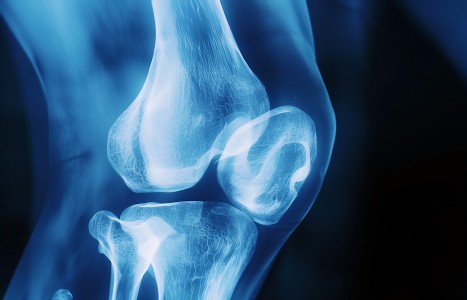While there may be no “magic bullet” when it comes to health, this should not dissuade patients or practitioners from seeking out ingredients that offer multiple health benefits. When it comes to dietary supplements, there are thousands upon thousands of choices. So, why not choose one that can address pain and assist with mental health? A supplement that can address inflammation, while also preventing certain types of cancer.
| Digital ExclusiveRock Me Harder, Rock Me Slower
The great common denominator of chiropractic is the training all DCs have in using their hands on patients. More specifically, it is the training to deliver an adjustment to a spinal joint using a high-velocity, low-amplitude technique, often described as a "diversified" technique. Every chiropractor has had to learn how to do this, even if they choose not to use it in favor of other techniques. Even if a DC specializes in treating shoulders, using clinical nutrition or adjusting mammals, they were trained to quickly move a spinal bone and often hear a noise. Put more crudely, we DCs all know how to crack someone's neck.
This traditional type of technique is not easy to do. Well, it is easy to do it poorly, but to do it right is an uncompromising art. That is because our patients come in all different sizes, shapes, tones and varying states of decay. It would be easier if all patients were in their early 20s and healthy, which was basically the state of the first lab volunteers used in the technique classes in chiropractic school. We met these volunteers, and they were us.
Sometimes a patient asks me, "Who did you practice on when you were learning to adjust?" I want to give some smart-aleck retort like, "Cattle. We adjusted young dairy calves until they were sacrificed to make veal." But alas, we practiced on each other and have the scars to prove it. One of my classmates was especially slow in learning the art of the diversified technique. He had hands like hams and fingers like sausages. His idea of finesse was to crack his own knuckles before attempting an adjustment. If, by the luck of the draw, I happened to be his partner in class, I would pray and cross myself, and I'm not even Catholic.
It did not take long in practice for me to realize that I couldn't use the same technique on everyone. When all you have is a hammer, it's time to at least buy a new rubber hammer. For instance, brittle, litigious patients are perhaps not good candidates for hard manipulation. Thankfully, we DCs have alternative techniques in our armamentarium. However, many patients have experienced good results with diversified technique, especially done with gusto by the treating chiropractor, and they expect such treatment.
It's funny how a particular incident can stick in one's memory. As a greenhorn DC, I clearly recollect the first patient who told me, straight out, that he needed a "good cracking." The man was big, about 6' 4", and moderately obese. He was in his 50s, with a history of significant degenerative arthritis, and looked for chiropractic care only when in dire pain. He was a "firm believer" in chiropractic and apparently had always had great results. "Just roll my hips", he offered, "and that should do it. And don't be afraid to give 'er all ya got!" Since I was just out of school and without any meaningful experience, this seemed perfectly reasonable.
However, upon palpation of his back, I discovered that his spine felt as if it was encased in plaster. He was in acute pain, so he could barely turn on his side. He turned like a hippo about to give birth. The treatment table I had at the time was a little too tall, so even on my tiptoes, I couldn't quite reach over his back to contact the spine. It seemed like we were grappling in some kind of Ultimate Fighter cage match. It was like trying to hog-tie a sumo wrestler. Hot perspiration dripped from by brow, beads bouncing off his back like fleas abandoning a shaved mutt.
Finally after I gave a little jump, I managed to grab enough of his pelvis to roll it forward with a tug. The problem was that the rest of him rolled forward, too, right off the table. He didn't exactly fall on top on me, since my slick shoes gave way on the carpet first, but he gave a "dead cat" bounce on the floor and stayed there for what seemed to be too many minutes. It was the first time that I questioned the wisdom of doing whatever the patient asked.
Traditional diversified technique is meant to move bones gently or more assertively. One of the more intimate techniques used is the "anterior" move. For the reader who has not watched or experienced it, a description is in order. The patient is face-up and the doctor puts their fist, hand or arm (or a small 2 x 4) behind the mid-back. Then, with the patient's arms crossed, the DC uses their free arm and body to push down on the patient's chest, using the aforementioned fulcrum to cause a joint release. Another way to describe this is that the chiropractor hugs the patient and then jumps on them.
Again, I have a special memory of the first time I felt odd doing this technique. The patient was a very buxom female. Her husband was sitting there with her, watching me hugging his wife and preparing to jump on her. A moment of clarity struck me. To this day, I give about a 15-minute description of this move before the two-second procedure. No misunderstanding here, I hope.
Manipulation done the traditional way is not benign, but it sure helps a lot of people. The right technique, for the right patient, at the right time is powerful. I'm still trying to learn how to do that.


